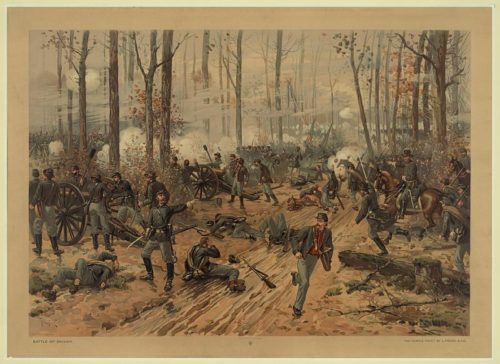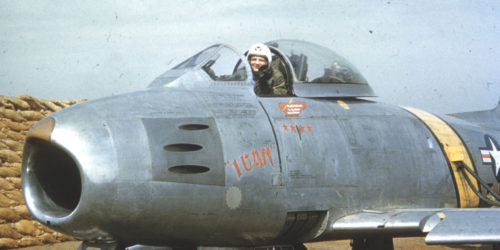April 6 in Military History
[This Day in Military History is published daily at OpsLens.com]
1862: As Maj. Gen. Ulysses S. Grant’s 42,000-man force marches for the rail center of Corinth (Tenn.), they are intercepted and driven back by Confederate Gen. Albert Sidney Johnston’s Army of Mississippi near Shiloh Church.
The fighting is desperate on both sides – described as “a murderous fistfight” – and the bloodiest battle to date in American military history. Confederate and Union casualties combined will exceed well over 23,000 in two days. The Confederates carry the first day, but Johnston becomes the highest-ranking officer for either side to be killed during the Civil War.

In the end, Grant wins the Battle of Shiloh (also known as the the Battle of Pittsburg Landing): stiff Union resolve and reinforcements determining the outcome.
1906: An expedition led by Cmdr. Robert Peary reaches the geographic North Pole. Peary leaves behind a note in a bottle stating; “I have this day hoisted the national ensign of the United States of America at this place […] and have formally taken possession of the entire region, and adjacent, for and in the name of the President of the United States of America.”
1917: After Germany resumes unrestricted submarine warfare on Allied (including U.S.) shipping and discovery of the “Zimmerman Telegram”, proposing German alliance with Mexico if the U.S. enters World War I, Congress declares war on Germany.
1924: Four modified Douglas torpedo bombers known as the Douglas World Cruisers take off from Seattle on the first-ever circumnavigation of the globe by an airplane. 175 days later, two of the Army biplanes return to Seattle, having covered 26,345 miles in 363 hours of flying time.
1952: F-86 Sabre pilot Capt. Iven C. Kincheloe, Jr. of the 25th Fighter Interceptor Squadron kills his fifth enemy MiG, becoming the United States’ tenth ace of the Korean War. Following the war, Kincheloe becomes a test pilot and, in the seat of the Bell X-2 rocketplane, becomes the first human to fly above 100,000 feet – earning him the nickname “America’s No. 1 Spaceman.”

Were it not for his fatal F-104 Starfighter crash at Edwards Air Force Base in 1958, Kincheloe would very likely have become one of America’s first astronauts. Along with future Apollo astronaut Neil Armstrong, Kincheloe had been selected for the Man in Space Soonest program – an Air Force idea to use a Thor ballistic missile to send a Bell X-15 rocketplane into space. However, the program was cancelled and would be replaced by Project Mercury.
1959: The Northrop “Snark” missile undergoes its first full-range test, with the 67-foot-long cruise missile hitting its target 5,000 miles downrange. Capable of carrying a three-megaton warhead, the missile will be fielded the following year. However with the advent of intercontinental ballistic missiles, President John F. Kennedy cancels the program in 1961. Due to navigational issues, many were surprised the missiles were placed in operation in the first place; so many crashed during training that the Caribbean was said to be “Snark-infested waters.”
1965: President Lyndon Johnson’s National Security Advisor McGeorge Bundy signs an order authorizing American combat troops to begin offensive operations in Vietnam. Prior to this order, soldiers and Marines were limited to defensive operations around air bases.